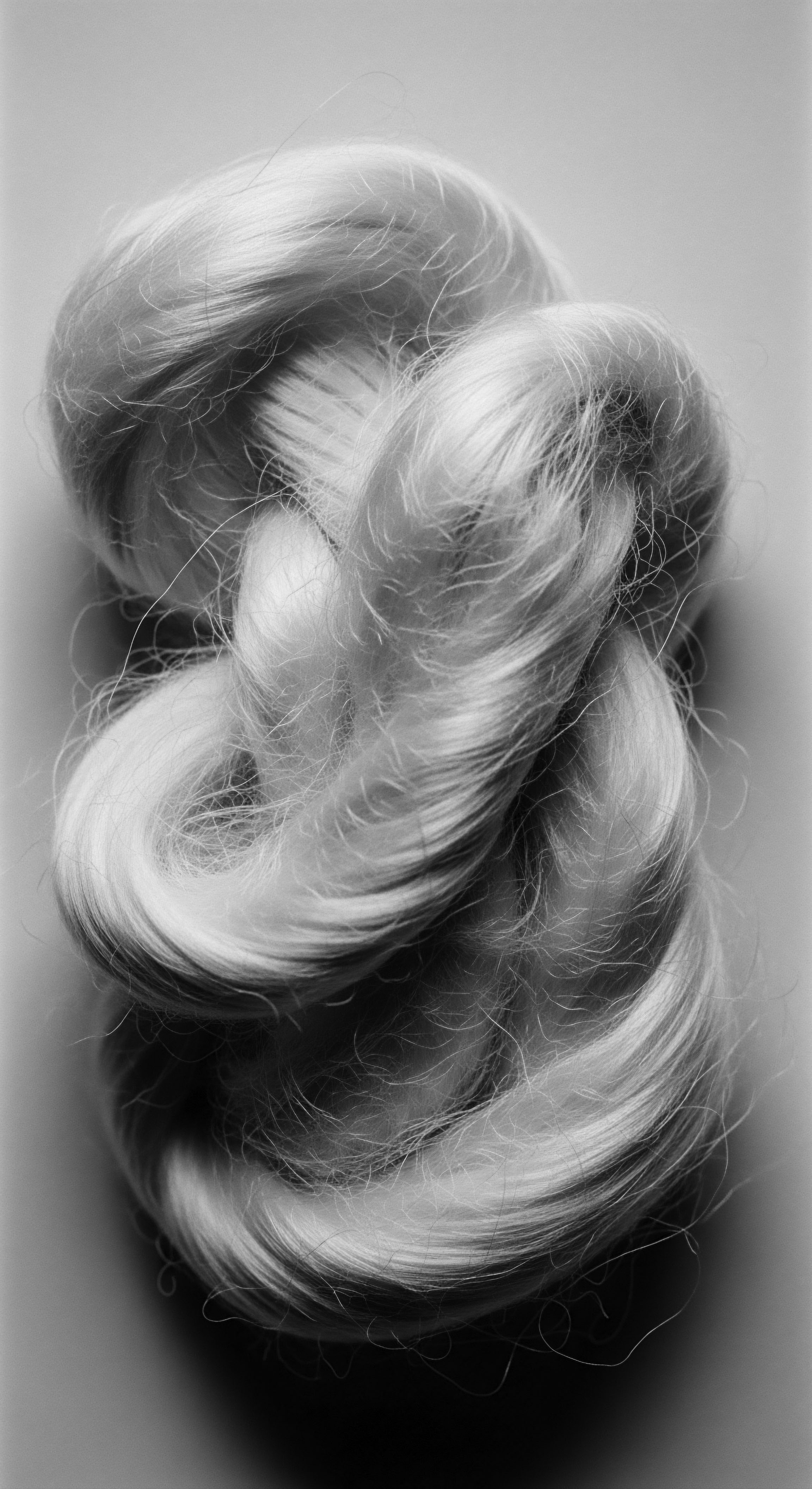
Fundamentals
The very notion of Silk Fibroin, when whispered through the hallowed halls of Roothea’s living library, carries an ancient resonance, a quiet strength that speaks directly to the soul of every strand, particularly those graced with the glorious complexity of textured hair. At its core, Silk Fibroin stands as the primary protein component of natural silk, a marvel of biological engineering spun by the silkworm, Bombyx mori. This protein, a polypeptide chain, forms the structural backbone of silk fibers, granting them their legendary tensile strength, lustrous sheen, and remarkable softness. It is this very softness, coupled with an unparalleled smoothness, that has long drawn the attention of those who understand the delicate balance required for nurturing hair, a wisdom passed down through generations.
Our initial exploration of Silk Fibroin begins with its elemental biology, a journey into the molecular architecture that confers its unique properties. The Silk Fibroin molecule is a fibrous protein, meaning its polypeptide chains are arranged in long, parallel strands, creating a highly ordered and crystalline structure. This arrangement contributes to silk’s incredible durability, making it one of nature’s strongest fibers.
Beyond its strength, Silk Fibroin possesses a natural affinity for moisture, a property that has been intuitively understood by ancestral practitioners long before the advent of modern chemistry. This capacity to absorb and release moisture gently, without stripping the hair, makes it a benevolent presence in the care regimen for hair that often yearns for hydration.
Silk Fibroin, the foundational protein of silk, is a testament to nature’s ingenuity, offering unparalleled strength and a gentle touch that aligns with the deepest needs of textured hair.
The Meaning of Silk Fibroin extends beyond its chemical makeup; it embodies a promise of protection and gentle care. For textured hair, which often experiences a unique set of challenges related to moisture retention and friction, the properties of Silk Fibroin are particularly pertinent. The coiled, intricate patterns of curls, coils, and waves, while breathtaking in their diversity, also present numerous points of contact where strands can rub against each other or against abrasive surfaces.
This constant friction can lead to breakage, frizz, and a loss of definition. The inherent smoothness of Silk Fibroin acts as a silent guardian, reducing this mechanical stress and allowing hair to retain its integrity and natural beauty.
Consider the profound simplicity of its Designation ❉ ‘fibroin,’ signifying its fibrous nature, a testament to its role in creating the resilient, flexible strands of silk. This fibrous characteristic translates directly to its benefit in hair care. When incorporated into products or used in the form of silk accessories, the protein creates a smooth, almost frictionless environment for hair. This is especially vital for maintaining the delicate cuticle layer of textured hair, which, when lifted or damaged, can lead to moisture loss and a rough texture.
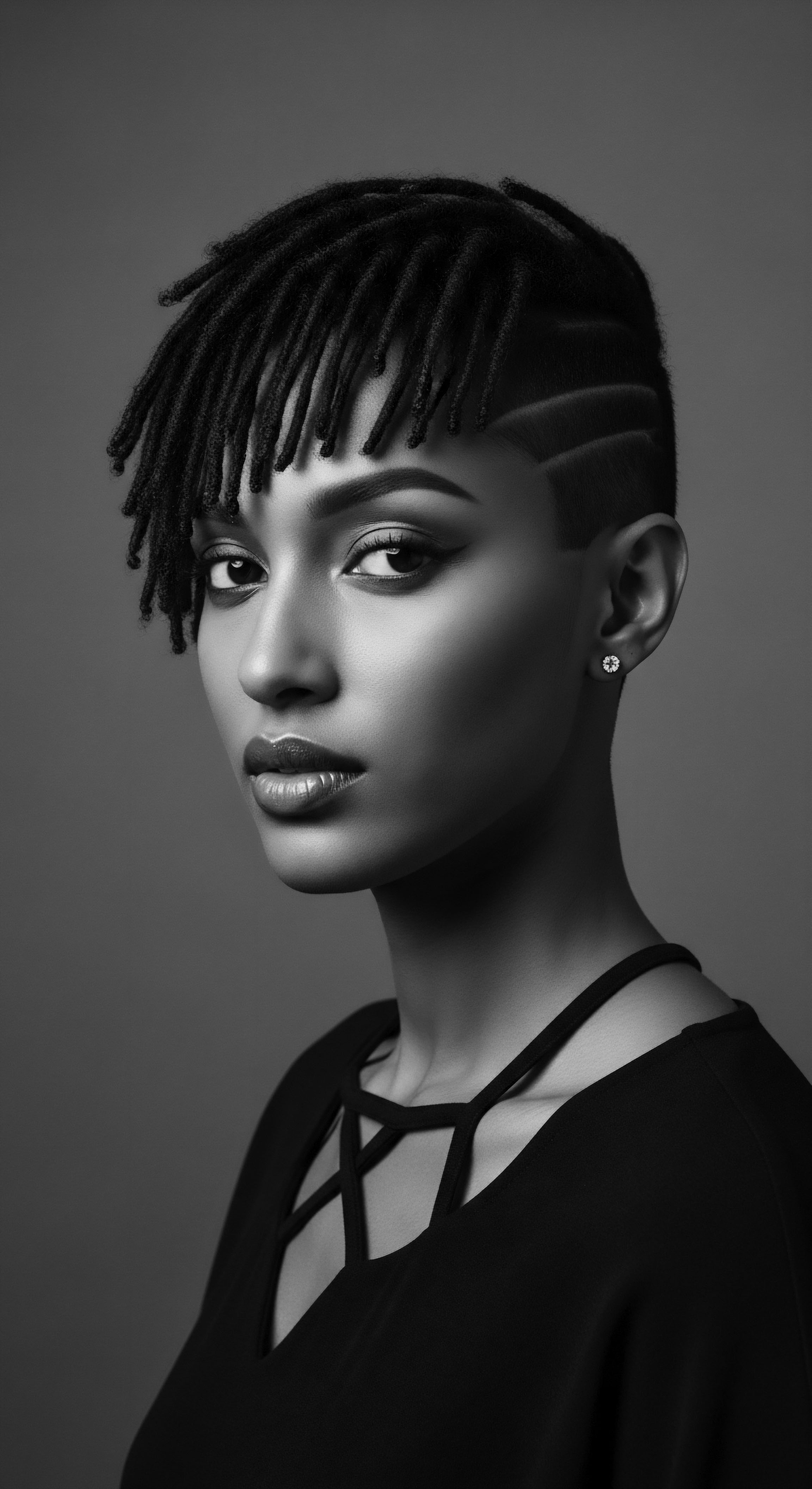
The Gentle Touch of Ancestral Wisdom
The recognition of materials that offer a gentle touch to hair is not a modern discovery; it is a legacy passed through countless hands. Long before scientific laboratories isolated Silk Fibroin, ancestral communities understood the value of smooth, natural fibers for hair protection. This wisdom, rooted in observation and generations of practice, forms the bedrock of our understanding.
The use of fine, smooth cloths for head wraps and hair coverings across various cultures, particularly in African and diasporic traditions, serves as a powerful testament to this intuitive knowledge. These practices, often imbued with cultural significance and symbolic meaning, simultaneously provided practical benefits, aligning with the very properties that make Silk Fibroin so beneficial today.
- Protection from the Elements ❉ Traditional head coverings, often made from smooth fabrics, shielded hair from harsh sun, dust, and environmental aggressors, preserving its vitality.
- Moisture Preservation ❉ Wrapping hair in gentle materials helped to seal in moisture, a crucial aspect for maintaining the health and suppleness of textured strands in diverse climates.
- Friction Reduction ❉ The inherent smoothness of these traditional fabrics minimized rubbing and snagging, preventing breakage and preserving intricate hairstyles.
The Clarification of Silk Fibroin’s role in hair care is thus a continuation of this ancient dialogue between human ingenuity and nature’s gifts. It is not merely a chemical compound; it is a bridge between past practices and present understanding, a tangible link to the enduring wisdom of those who came before us, seeking to preserve the inherent beauty and strength of their hair. The foundational understanding of Silk Fibroin, therefore, begins with acknowledging its natural properties and the historical recognition of its benefits, particularly for hair that tells a story of resilience and heritage.

Intermediate
Stepping beyond the fundamental understanding, the Explanation of Silk Fibroin deepens, revealing its profound relevance within the nuanced landscape of textured hair care. Its Significance lies not just in its composition, but in its dynamic interaction with the hair strand itself. Silk Fibroin, a protein composed primarily of amino acids like glycine, alanine, and serine, exhibits a unique molecular structure characterized by both crystalline and amorphous regions.
The crystalline regions impart strength, while the amorphous regions allow for flexibility and moisture absorption. This duality is particularly advantageous for textured hair, which often requires both structural integrity and pliable softness to maintain its natural curl pattern and resist breakage.
The molecular weight of Silk Fibroin also plays a critical role in its efficacy. When hydrolyzed, meaning broken down into smaller peptides, Silk Fibroin can penetrate the hair shaft more effectively. These smaller protein fragments can temporarily patch areas of damage on the cuticle, reinforcing the hair’s outer layer and smoothing its surface.
This restorative action is especially beneficial for textured hair, which is inherently more susceptible to mechanical damage due to its coiled structure and numerous points of torsion. The gentle yet powerful reinforcement provided by Silk Fibroin helps to fortify the hair, making it more resilient against daily manipulation and environmental stressors.
The molecular intricacies of Silk Fibroin offer a dual benefit of strengthening and softening, a vital contribution to the resilience and beauty of textured hair.
The Interpretation of Silk Fibroin’s benefits also considers its humectant properties. While it is a protein, it also possesses a natural ability to attract and hold moisture from the air, a characteristic often attributed to its high content of hydrophilic (water-attracting) amino acids. For textured hair, which can struggle with moisture retention due to its cuticle structure and porosity variations, this humectant quality is invaluable. It helps to maintain the hair’s internal hydration levels, preventing dryness and brittleness, which are common precursors to breakage in coils and curls.

A Legacy of Protection ❉ Silk in Ancestral Practices
The historical Implication of Silk Fibroin’s properties can be traced through the ancestral practices of various communities, particularly those with a rich heritage of textured hair care. The choice of materials for head coverings, sleeping caps, and hair wraps was often an intuitive scientific selection, driven by generations of observation. While direct chemical analysis was absent, the empirical evidence of reduced friction, retained moisture, and preserved styles spoke volumes. For instance, the use of smooth, often silk-like fabrics in traditional African and diasporic head wrapping traditions served not only as adornment or cultural markers but also as practical tools for hair preservation.
Consider the practices among certain West African ethnic groups, where the art of hair adornment and protection was deeply intertwined with social status and spiritual beliefs. Fine, smooth cloths, sometimes woven from indigenous silk or highly polished plant fibers that mimicked silk’s glide, were employed to wrap intricate braided or twisted styles. This was not merely for aesthetic appeal; it was a deliberate act of care.
These wraps minimized friction against rough surfaces, preventing tangling and breakage, especially during sleep or strenuous activities. This ancestral wisdom, prioritizing the protection of delicate hair structures through material choice, directly parallels the modern understanding of Silk Fibroin’s benefits.
A powerful historical example that illuminates this connection is the widespread practice of using silk headwraps and bonnets among African American women, particularly after the transatlantic slave trade. This tradition, which continues to this day, arose not only from a desire for modesty or style but also from a profound understanding of hair protection. Faced with harsh conditions and the need to preserve their often-manipulated and delicate hair, enslaved and free Black women instinctively turned to smooth fabrics. While not always explicitly ‘silk,’ the preference for materials that reduced friction and maintained moisture became a vital component of their hair care regimen.
This practice, passed down through generations, effectively leveraged the very properties that Silk Fibroin embodies. As historian and scholar, T. J. Denean, notes in her work on African American beauty culture, the headwrap became a symbol of resilience and self-preservation, simultaneously protecting hair from damage and serving as a canvas for cultural expression (Denean, 2001). This historical narrative underscores the deep-seated, intuitive knowledge of hair protection that predates modern scientific analysis of proteins like fibroin.
| Aspect of Care Material Selection |
| Ancestral Practice (Pre-Modern Science) Preference for fine, smooth cloths (e.g. polished cotton, early silk weaves, smooth plant fibers) for headwraps and coverings. |
| Modern Understanding (Post-Fibroin Isolation) Focus on silk (containing Silk Fibroin) for pillowcases, bonnets, and hair accessories due to its low friction coefficient. |
| Aspect of Care Primary Benefit Sought |
| Ancestral Practice (Pre-Modern Science) Reduction of tangling, preservation of styles, maintenance of moisture, protection from environmental aggressors. |
| Modern Understanding (Post-Fibroin Isolation) Minimization of cuticle damage, reduction of frizz, preservation of hair's natural oils, reinforcement of hair structure by Silk Fibroin. |
| Aspect of Care Application Method |
| Ancestral Practice (Pre-Modern Science) Skillful wrapping and tying techniques to secure hair, often worn day and night for continuous protection. |
| Modern Understanding (Post-Fibroin Isolation) Wearing silk bonnets, sleeping on silk pillowcases, using silk scrunchies to reduce friction and breakage. |
| Aspect of Care The continuity of wisdom, from intuitive ancestral choices to scientifically validated material properties, highlights a shared pursuit of hair health and resilience. |
The Connotation of Silk Fibroin in this context is one of enduring wisdom. It speaks to a deep, practical understanding of hair needs that transcended scientific terminology. The choices made by ancestors, driven by necessity and observation, laid the groundwork for our contemporary appreciation of materials that safeguard the hair’s delicate structure. The intermediate level of understanding thus bridges the gap between the innate properties of Silk Fibroin and its historical application, revealing a continuous lineage of care that has always sought to preserve the unique beauty of textured hair.

Academic
The academic Definition of Silk Fibroin transcends its common perception, delving into its precise biochemical architecture and the biophysical mechanisms through which it interacts with the keratinous structures of hair, particularly within the unique context of textured hair. Silk Fibroin, derived primarily from the domesticated silkworm Bombyx mori, is a complex fibrous protein, predominantly characterized by repetitive amino acid sequences rich in glycine (Gly), alanine (Ala), and serine (Ser). These sequences facilitate the formation of highly ordered β-sheet structures, which are responsible for the remarkable mechanical strength and elasticity that define silk fibers. The crystallinity of these β-sheets, intermingled with amorphous regions, grants Silk Fibroin a unique balance of rigidity and flexibility, a duality critical for its efficacy in biomaterial applications, including those targeting hair integrity.
The Meaning of Silk Fibroin in advanced hair science is rooted in its capacity to mitigate structural deficiencies in the hair fiber. The hair shaft, particularly in textured hair, is prone to mechanical stress due to its helical and coiled morphology, which creates numerous stress concentration points along the fiber length. The cuticle, the outermost protective layer, can be easily lifted or abraded, leading to increased porosity, moisture loss, and susceptibility to breakage. Hydrolyzed Silk Fibroin, fragmented into peptides of varying molecular weights, possesses a demonstrable affinity for keratin.
These peptides can adsorb onto the hair surface, forming a protective film, and, depending on their size, potentially penetrate the outer layers of the cortex. This adsorption and limited penetration mechanism allows Silk Fibroin to reinforce the cuticle, smooth the hair surface, and reduce the coefficient of friction, thereby diminishing mechanical wear.
Academic inquiry into Silk Fibroin unveils its intricate molecular architecture and biophysical interactions, illuminating its unparalleled capacity to fortify and protect the complex structures of textured hair.
The advanced Delineation of Silk Fibroin’s interaction with hair also considers its hygroscopic properties. While not a primary humectant in the same vein as glycerin, the presence of numerous hydroxyl and amide groups within its amino acid composition allows Silk Fibroin to bind water molecules. This contributes to its ability to modulate moisture content within the hair fiber, assisting in the maintenance of elasticity and pliability.
For textured hair, which often exhibits lower moisture retention due to its structural characteristics and propensity for cuticle lift, this property is particularly advantageous. It aids in preserving the hair’s natural hydration, preventing the desiccation that can lead to brittleness and fracture.
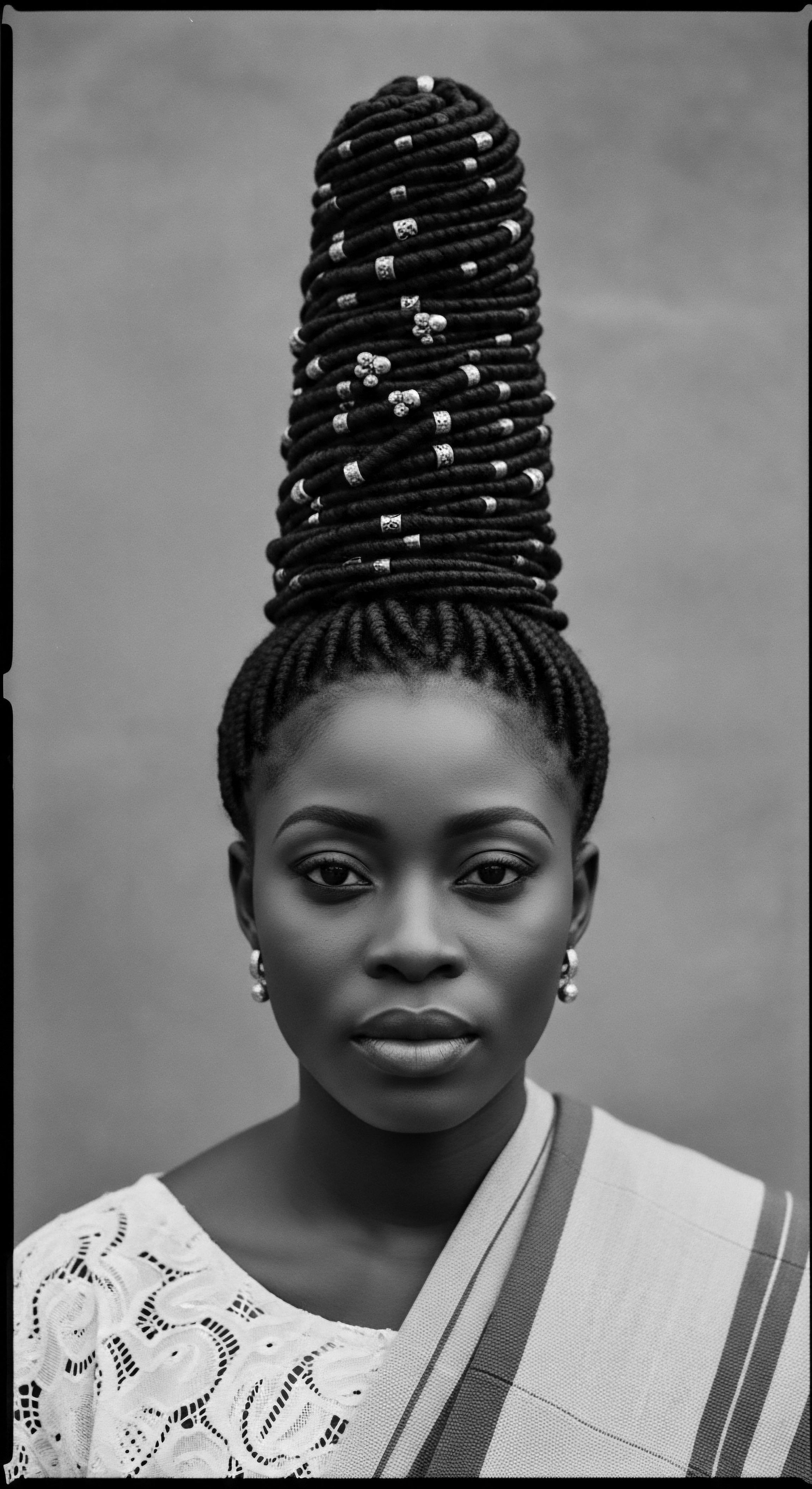
The Interconnected Incidence ❉ Ancestral Ingenuity and Modern Validation
A deep analysis of Silk Fibroin’s academic relevance reveals a compelling interconnected incidence ❉ the profound alignment between ancestral hair care wisdom and contemporary scientific validation. This is not merely a parallel observation; it represents a continuum of knowledge, where centuries of empirical practice find their biochemical explanation in the properties of Silk Fibroin. The specific historical incidence we examine is the widespread, yet often understated, utilization of smooth, friction-reducing materials in traditional hair care practices across the African diaspora, particularly the use of headwraps and protective coverings, which intuitively harnessed the principles now understood through the lens of Silk Fibroin.
For generations, Black and mixed-race communities, particularly women, developed sophisticated hair care regimens born of necessity and deep understanding of their unique hair textures. These practices, often passed down orally and through direct demonstration, frequently involved the use of smooth fabrics to protect hair, especially during sleep or under adverse conditions. While these fabrics were not always identified chemically as ‘silk,’ the consistent preference for materials that exhibited a low coefficient of friction and a gentle interaction with the hair surface is a testament to an astute observational science. This ancestral methodology effectively prefigured the modern understanding of how materials like silk, rich in fibroin, preserve hair integrity.
Consider the profound cultural and practical Significance of the headwrap in African American history. Beyond its symbolic roles in identity, resistance, and adornment, the headwrap served as a critical protective tool. During slavery, and in the post-emancipation era, Black women used headwraps, often made from fine cottons, satins, or, when available, actual silk, to shield their hair from the harsh realities of labor, environmental exposure, and the scarcity of suitable hair care products. This practice was not merely a stylistic choice; it was a pragmatic application of material science.
The smooth surface of these preferred fabrics minimized the friction that could lead to breakage and tangling in highly coiled hair, preserving moisture and extending the life of protective styles like braids and twists. This historical phenomenon demonstrates a sophisticated, albeit unarticulated, understanding of the very principles that Silk Fibroin embodies ❉ friction reduction, moisture retention, and structural protection. The collective wisdom of these communities, refined over centuries, effectively created a ‘living laboratory’ where the benefits of smooth materials for hair were empirically validated.
This historical practice offers a powerful counter-narrative to the idea that advanced hair science is solely a product of modern laboratories. Instead, it highlights how ancestral communities, through keen observation and iterative practice, arrived at solutions that modern biochemistry now explains. The continuous use of silk-lined bonnets and pillowcases in contemporary Black hair care is a direct lineage of this ancestral wisdom, now bolstered by scientific understanding of Silk Fibroin’s molecular efficacy. The choice of silk for these applications is not arbitrary; it is a continuation of a heritage of hair preservation, where the tactile benefits of smooth materials were understood long before the protein was isolated and characterized.
The Substance of this academic exploration is the recognition that the benefits of Silk Fibroin for textured hair are not a new discovery but a scientific articulation of long-standing ancestral knowledge. This interconnectedness underscores the depth of wisdom embedded within traditional practices, inviting a respectful dialogue between historical precedent and contemporary scientific inquiry. The efficacy of Silk Fibroin in reinforcing hair, reducing friction, and maintaining hydration for textured hair types is thus not merely a biochemical fact; it is a validation of a heritage of care that has always sought to protect and celebrate the unique splendor of coils, curls, and waves.
- Protein Reinforcement ❉ Hydrolyzed Silk Fibroin peptides, due to their specific amino acid profile and molecular size, adhere to the hair’s cuticle, temporarily reinforcing damaged areas and smoothing the surface.
- Friction Coefficient Reduction ❉ The inherent smoothness of silk fibers, conferred by Silk Fibroin, significantly lowers the coefficient of friction between hair strands and external surfaces, minimizing mechanical abrasion and breakage.
- Moisture Balance Modulation ❉ While not a primary humectant, Silk Fibroin’s capacity to interact with water molecules contributes to maintaining optimal hydration levels within the hair fiber, enhancing elasticity.
- Cuticle Integrity Preservation ❉ By reducing friction and providing a protective film, Silk Fibroin helps to keep the cuticle scales flat and intact, preventing moisture loss and maintaining the hair’s natural sheen.
The academic lens reveals that the enduring appeal of silk, and by extension Silk Fibroin, in textured hair care is not merely anecdotal. It is grounded in demonstrable biophysical properties that directly address the specific structural and environmental challenges faced by coiled and curly hair. This deeper understanding enriches our appreciation for the continuity of knowledge, where the silent wisdom of ancestors finds its eloquent expression in the precise language of modern science.
The Essence of Silk Fibroin’s value, from an academic standpoint, lies in its dual capacity to act as both a structural fortifier and a surface conditioner for hair. Its unique composition allows it to form a delicate yet resilient film on the hair shaft, which is particularly advantageous for hair that is frequently manipulated or exposed to environmental stressors. The repetitive Gly-Ala-Ser sequences facilitate strong hydrogen bonding with the keratin proteins in hair, contributing to this protective layer.
This interaction is not merely superficial; it creates a more resilient hair fiber, less prone to the mechanical fatigue that often leads to split ends and breakage in textured hair. The academic perspective, therefore, solidifies the empirical observations of generations, providing a robust scientific framework for understanding why Silk Fibroin remains a cherished component in the pursuit of hair health and vitality.
The profound academic exploration of Silk Fibroin extends to its biocompatibility and non-irritating nature, which makes it a preferred ingredient in formulations designed for sensitive scalps and hair types prone to allergic reactions. Its natural origin and gentle interaction with biological systems are further aspects that elevate its standing in scientific inquiry. This level of scrutiny, from molecular structure to physiological interaction, solidifies Silk Fibroin’s place not just as a beneficial additive, but as a biomaterial with inherent properties that align with the complex needs of diverse hair textures, particularly those with a heritage of unique care requirements.
The Explication of Silk Fibroin also encompasses its potential in advanced hair repair technologies. Research continues to explore how modified Silk Fibroin, or its constituent peptides, might serve as scaffolds for delivering other beneficial compounds to the hair, or even as components in biomimetic systems designed to replicate the hair’s natural resilience. This forward-looking aspect of academic inquiry, while grounded in the protein’s fundamental properties, hints at future innovations that will continue to draw inspiration from this ancient material. The understanding gained from academic studies ensures that the utilization of Silk Fibroin in hair care is not merely based on tradition, but on a rigorous scientific foundation that respects its natural capabilities and maximizes its therapeutic potential for all hair types, with a special emphasis on the unique heritage of textured hair.
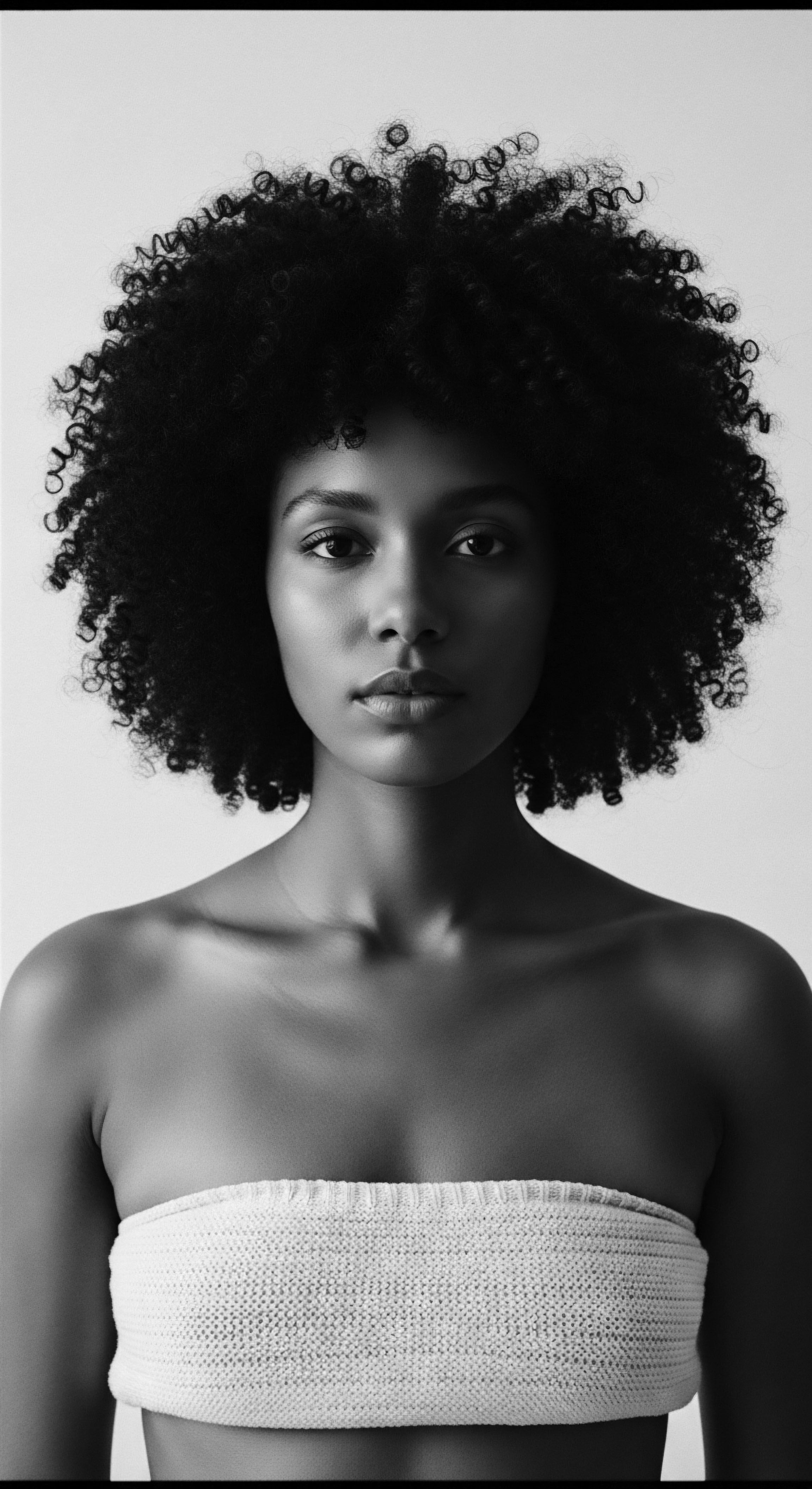
Reflection on the Heritage of Silk Fibroin
As we close the living pages of Roothea’s deep exploration into Silk Fibroin, a profound truth settles upon the spirit ❉ its story is not merely one of biochemistry, but a resonant echo of human ingenuity, ancestral wisdom, and the enduring quest for hair wellness. The very existence of Silk Fibroin, with its gentle strength and remarkable protective qualities, serves as a tangible link to a heritage of care that stretches back through time, long before laboratories could isolate its precise molecular structure. It reminds us that the pursuit of hair health, particularly for textured hair, has always been an intimate dance between observation, adaptation, and a deep respect for the gifts of the natural world.
The journey of Silk Fibroin, from the elemental biology of the silkworm to its cherished place in modern hair care, mirrors the resilience and adaptability inherent in the story of textured hair itself. Each coil, each curl, each wave carries a legacy of survival, beauty, and cultural expression. The intuitive understanding of ancestors, who chose smooth fabrics to protect their crowning glory, speaks to a sophisticated, embodied knowledge that transcends formal scientific training. It is a testament to the power of observation and the passing down of practical wisdom through generations, ensuring the continuity of care even in the face of adversity.
The ‘Soul of a Strand’ ethos finds its eloquent voice in the narrative of Silk Fibroin. It is a story of connection—connecting the past to the present, the scientific to the sacred, and the individual strand to the collective heritage. The gentle touch of silk, infused with the protective properties of its fibroin, becomes a metaphor for the tender care that textured hair has always deserved and, indeed, often demanded.
This reflection invites us to consider not just what Silk Fibroin is, but what it represents ❉ a continuous thread of wisdom, spun from nature’s bounty and woven into the very fabric of our hair care traditions. It calls us to honor the ancestral hands that first recognized the value of such materials, and to carry forward their legacy of mindful, heritage-centered care into the future.
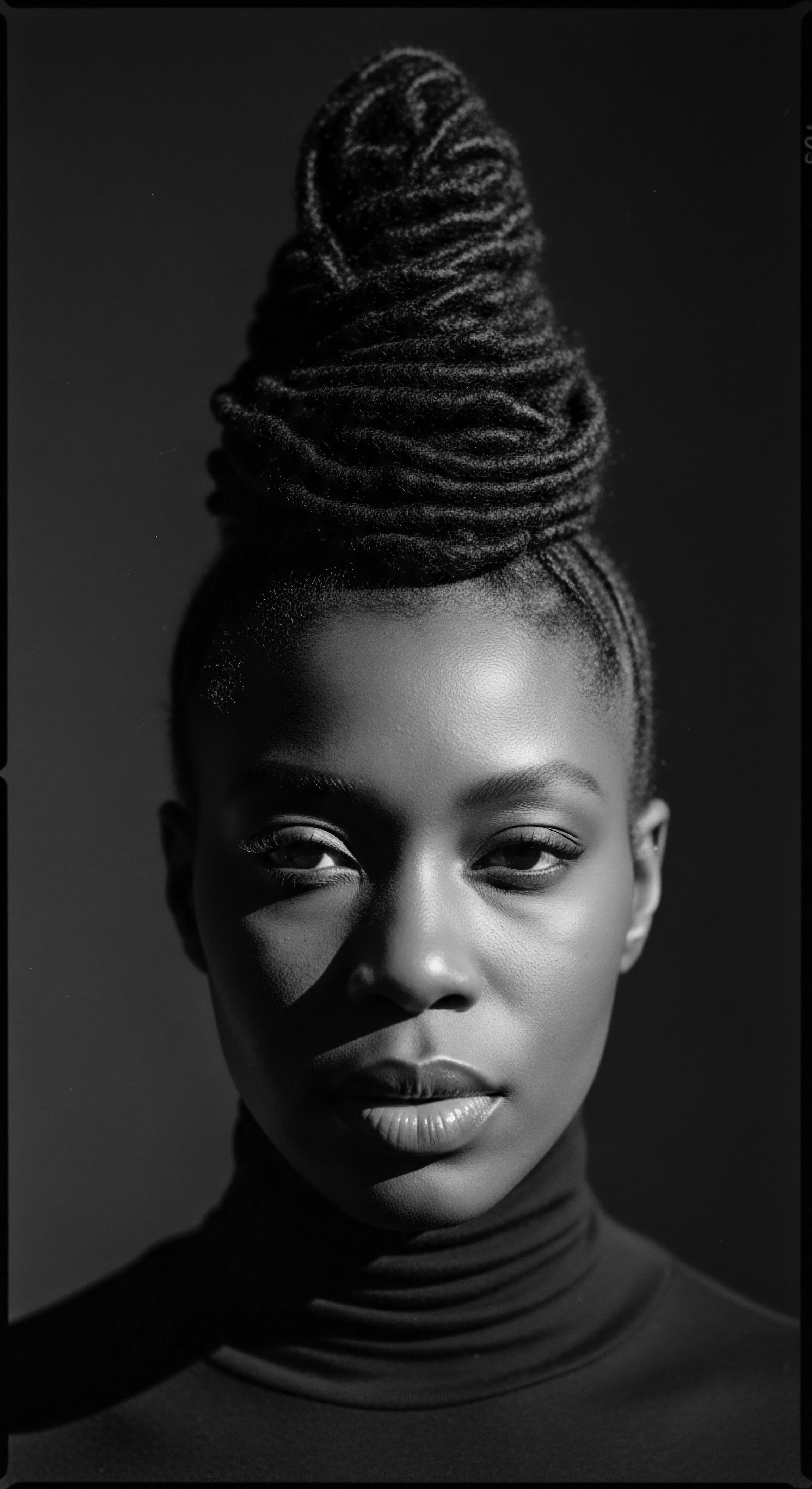
References
- Denean, T. J. (2001). African American Women’s Hair ❉ An Illustrated Cultural History. Milady.
- Gommersall, A. & Roberts, D. (2018). Silk ❉ Biology, Chemistry, and Technology. Royal Society of Chemistry.
- Kaplan, D. L. & Chen, X. (2006). Silk Fibroin ❉ A Biopolymer for Advanced Materials. John Wiley & Sons.
- Kundu, S. C. et al. (2013). Silk Biomaterials for Biomedical Applications. Woodhead Publishing.
- Lewis, R. V. (2006). Spider Silk ❉ Properties, Applications and Prospects. Springer.
- Marsh, J. M. & Johnson, D. (2001). Practical Hair Science. Micelle Press.
- Robbins, C. R. (2012). Chemical and Physical Behavior of Human Hair. Springer.
- Sakamoto, H. (2009). Hair Science and Technology. CRC Press.
- Wang, X. et al. (2008). Biomaterials based on silk fibroin. Science Press.
- Wilms, J. & Lewis, R. V. (2014). Biomaterials Science ❉ An Introduction to Materials in Medicine. Academic Press.
